Cable Knit Extended Width Computerized Longarm Quilting Design
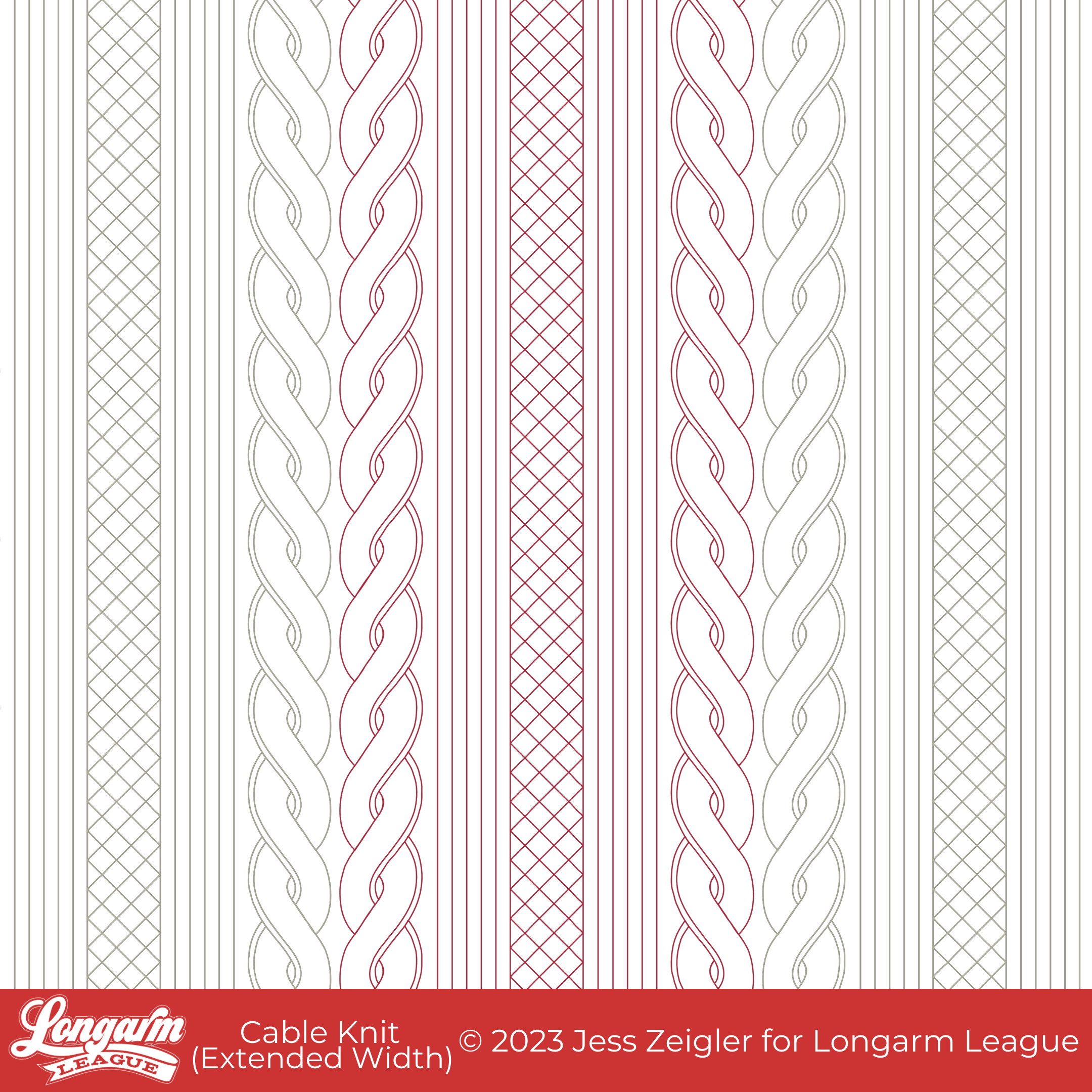
This is my latest quilt, sewn *in season* and just for fall. When the top was completed, I knew I wanted to carry the fall theme into the quilting, but I was wracking my brain to think of a fall-themed design that felt like me.
I'll never say never, but in the past, I haven't been "into" pumpkins, fall leaves, or Halloween ghosts, goblins, or spiderwebs. But knitting? Oooooh! Knitting is another story. The fall season gets me in the mooooooood for knitting! 
I taught myself to knit by watching YouTube about fourteen years ago, shortly after giving up my sewing room so we could have a nursery again for our youngest child. I needed a creative and tactile outlet, especially since I couldn't access my sewing machine, and knitting fit the bill. It didn't take up much space, and I loved the challenge of learning a new technique.
For a long while, I would knit one sweater for myself annually, but I haven't done that in probably five years. I miss it! The cardigan I've started wit...
Seis Edge-to-Edge Digital Quilting Design on my Plaid-ish 2 Quilt

Seis is the word for the number six in Spanish. Based on this design's hexagon shape, I knew I wanted to name it something relating to the hexagon, but I haven't gotten far enough in Duolingo to know the name for hexagon en español yet, so Seis is where I landed.
Okay, Google tells me hexagon is hexágono in Spanish, but now it's too late! I've already committed to Seis.

If you're on our email newsletter list, you might remember me talking about how obsessed I am with Duolingo. I am learning Spanish these days (streak of 57 days, nbd) to augment my high school Spanish education which started some 28 years ago. Ouch! It's one thing to recall the years since high school graduation, but it's another experience to count back to the time you began high school. I wasn't ready for that number!
Anyway, if you are interested in learning another language (they offer courses for 40+ languages), check out their website or download the app. They have a free tier, but I've found the paid f...
White Space Digital E2E Quilting Design
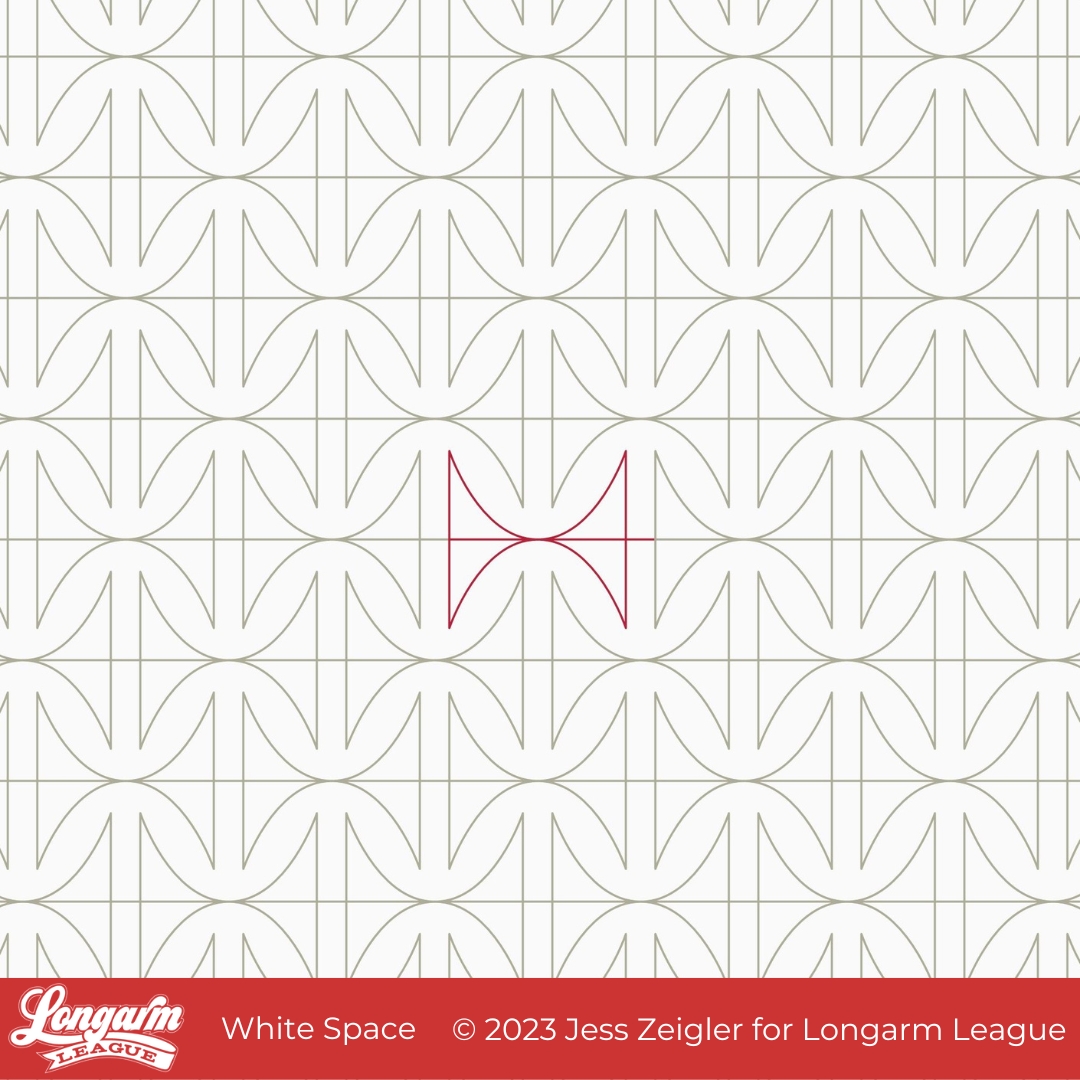
This design is all about the negative space—also known as white space—around the lines. I love how the curvy parts of the design are reminiscent of cathedral window blocks and how the straight lines create channels that provide some contrast to the curvy.

If I didn't design this and wasn't sure where the repeats were, it looks like it could be difficult to line up from row to row. That is definitely not the case! This design is very simple to stitch out. Every other row does need to be offset by 50%, but there is no exact matching necessary anywhere. 

If you stitched this design out on a quilt loaded on its side, you'd see results that play up hourglass or spool shapes. I also see asterisks and orange peel variations if I look at the pattern long enough! :) 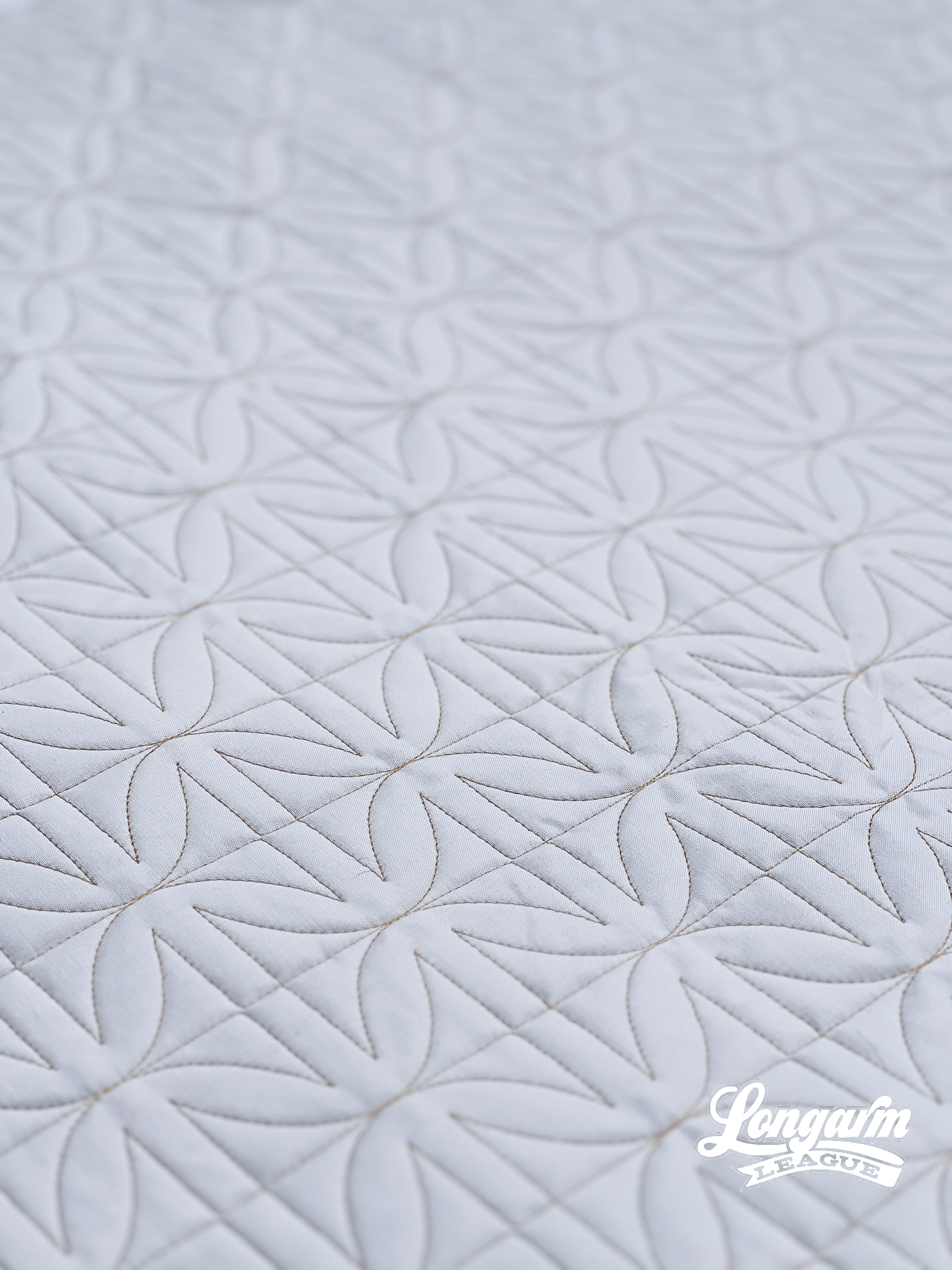
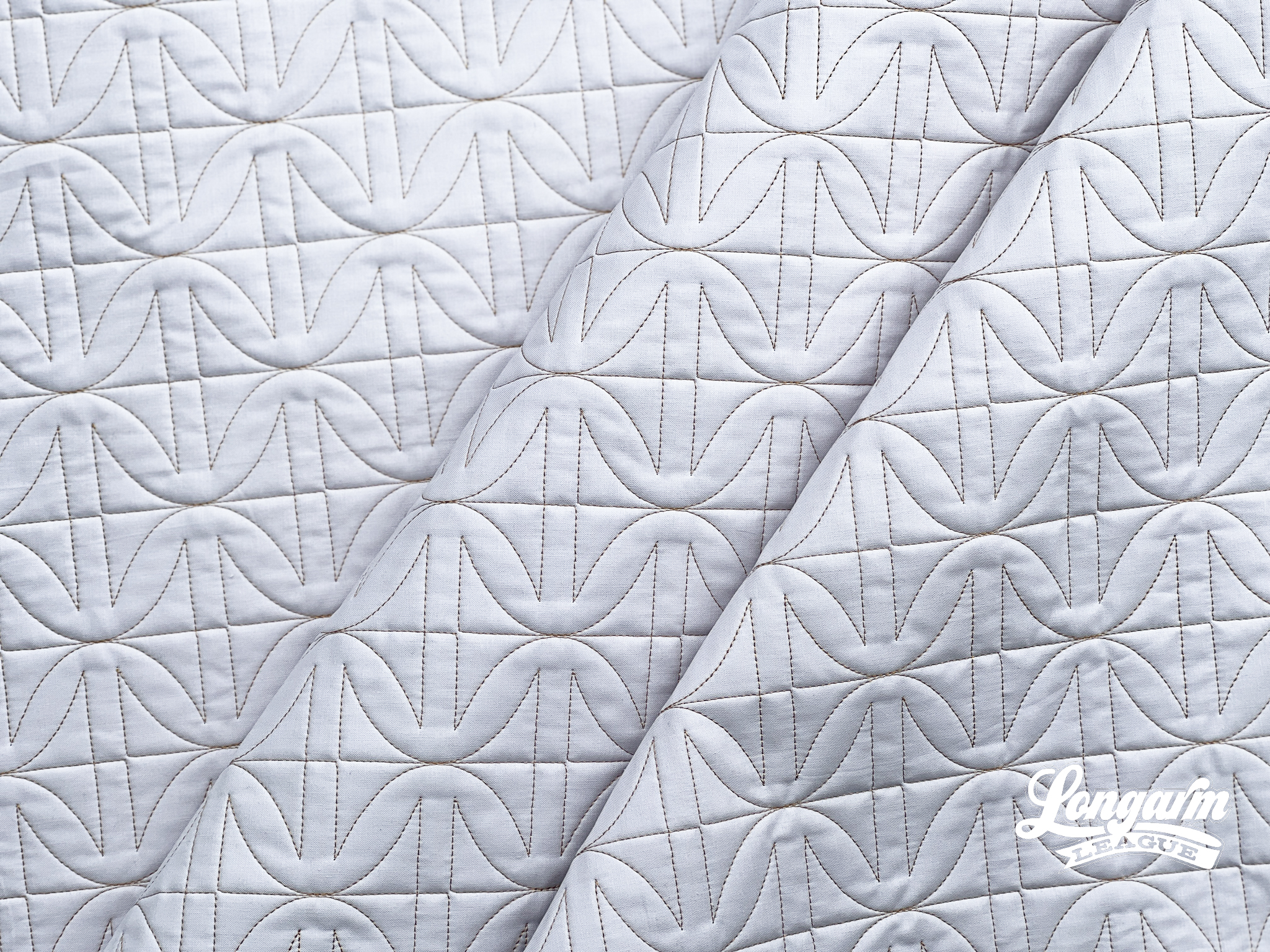

The Technical Details
A video of the stitch path appears at the top of this post. Again, it's a pretty straightforward and simple design with a fluid sequence. On the included PDF, I did indicate "minimal" over...
Always Digital Quilting E2E Design

Always is a new digital pantograph design that is a breeze to stitch out. The curvy contours of this shape work so well in providing a pleasant contrast with the straight lines and angles of most patchwork.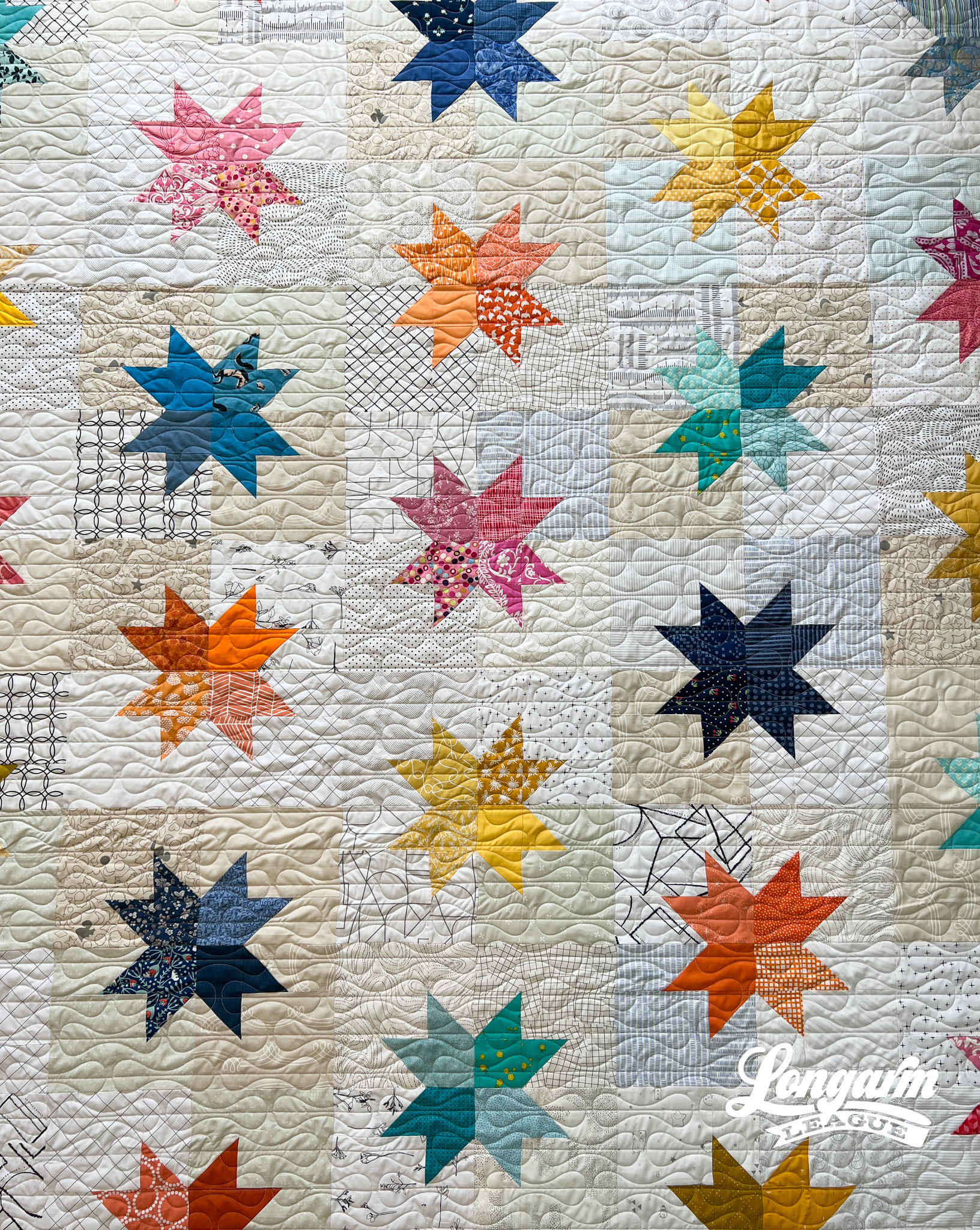
There's a retro feel to this design, too, but will fit the "mood" of many contemporary or modern quilts.
The Name
You might know from reading my previous blog posts that I often use a working title for designs before they get released and need a "real" name. Well, the working title for this one was Lightdays because of the shape resembling a pad. And well, growing up I could count on that particular brand being tucked away in the bathroom cupboards, so that's what my mind went to. My sister thought this was hysterical when I texted her the design with the name, and that's all that really matters. 😂
But obviously I couldn't actually use Lightdays as a name. I didn't want it to be THAT obvious or cause anyone to avoid using the pantograph because of the name. I asked my fr...
Top 20 Modern Edge to Edge Quilting Designs

Buying new digital pantograph designs is often as enticing as picking up a fat quarter—or ten!—at your local quilt shop. They can be oh-so-appealing, but which ones will you actually use the most in your business?
I can remember designs that I fell in love with and purchased on the spot, yet never actually used on a client’s quilt top. Conversely, there were several that I used over and over again, wringing every drop of value out of them. I developed my favorites based on ease of use and versatility. Of course, a longarm quilter's personal style and preferences can certainly play a part when making recommendations to clients, as well.
It’s been a while since I’ve quilted for others, so I thought it would be fun to ask other quilters what their current go-to pantographs are. I invited quilters from the Longarm League membership—along with other quilters who follow our social media accounts or subscribe to our email newsletter—to chime in with their current favorite edge-to-edge design...
Echoed Swirls and the Mini Modern Heart Quilt
This is not a drill. I was able to work on a quilt top I started making for myself back in 2017.
About a month ago, I was invited to a quilting retreat at Stitch Supply Co. in Altoona, Wisconsin. I had the best time! It really supercharged my desire for patchwork again. Now I want to finish WIPs and start new projects with the fabulous fabric I bought there.
For this project, the quilt pattern I used is called Mini Modern Heart. It's actually a foundation paper piecing block I designed to use up small scraps of fabric. It certainly is a good pattern for doing just that!
My original intention was to make one block per day for a year—but, you know—life happened and I came up WAYYYY short of my goal.

At the retreat, I decided to wrap-up the project once and for all. I abandoned my original plan (365 blocks) when I realized that I had enough blocks to make a nicely sized lap quilt.
And guess what?! I ended up with 11 columns of 13 blocks each, which is drumrolllllllll... 143 ...
Beleaf It or Not Digital Pantograph
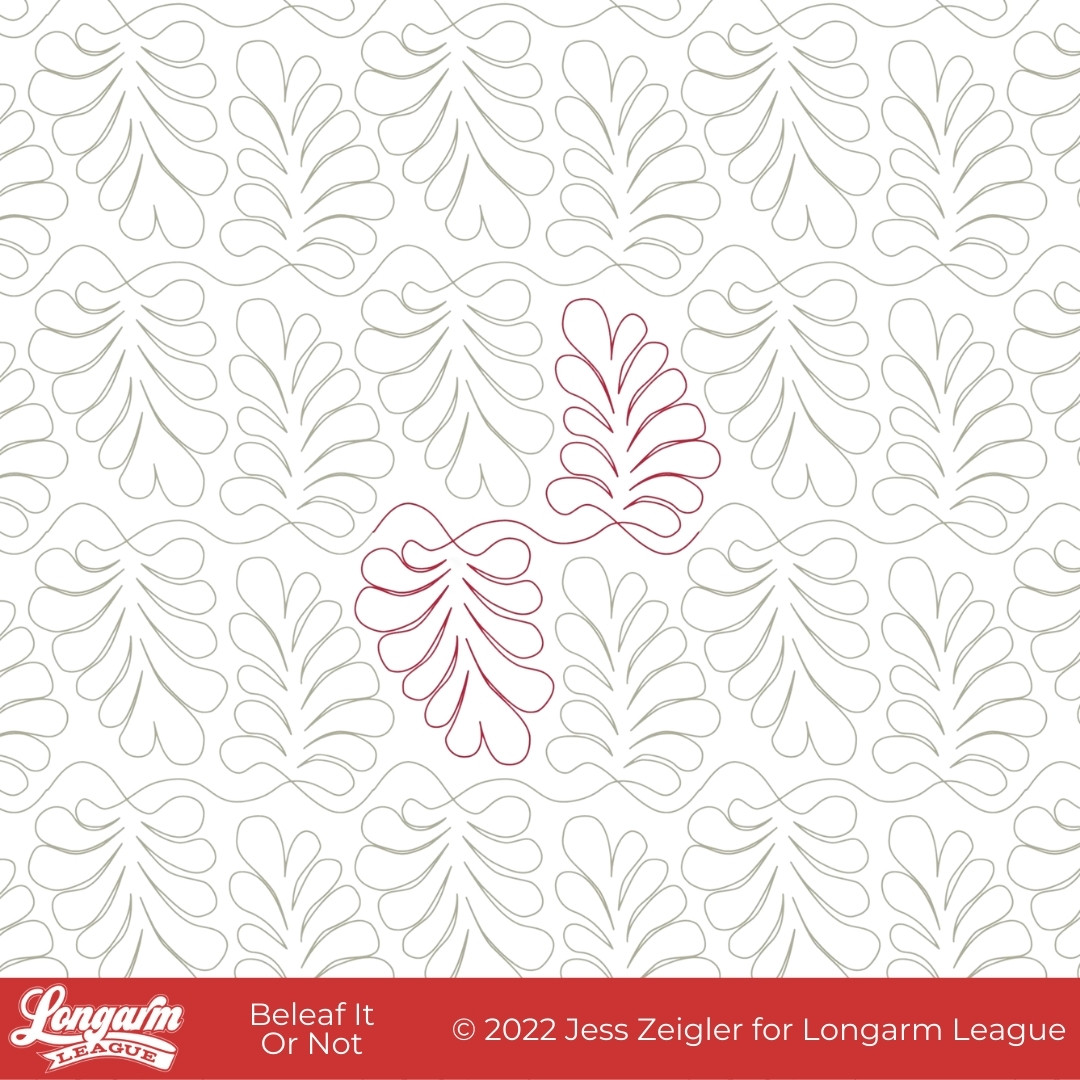
Quilty friends, naming designs is hard work. I was struggling to come up with a name for this design so I texted my mom and sister a photo of the finished sample, asking them for help. My sister's first response was Beleaf It Or Not and I laughed out loud so much that I had to go for it.

Seinfeld—because of the huge influence in our lives—has become part of our shared language. 'Beleaf It or Not' immediately reminded me of the episode that features George's outgoing answering machine message where he changed the words to the song "Believe It or Not".
THAT is what makes me giggle every time I think of it.

When I design edge to edge pantographs, my number one goal is to create interesting textures. I really love the repeated round shapes of the "leaves"—or as quilters would call them, feathers.

Here are my specifics using a baby-sized sample in the photos (45" x 45" quilt size):
Row height: 5.94"
Gap: -4.86"*
Pattern height: 10.8"
Offset: none
Backtracking: none
*Gap refe...
Mako and Thresher Digital Quilting Designs
Mako

I promise I'm not six years old and obsessed with sharks... even though both of these designs happen to named after sharks. I don't see it becoming a trend.
I came up with this design about a year ago. I originally named it Shark Smile because
- the repeat looks like a shark's tooth
- there's a song called "Shark Smile" from a band I love called Big Thief. Click here to listen to the song.
For fear that this blog post could start to remind you of those recipes you find online with an ENTIRE personal story attached {when you just want the recipe}, I do have a brief anecdote.
We saw Big Thief perform "Shark Smile" in Des Moines several years ago. The venue was so small and intimate. At one point of the song, the lyrics are "...as we went howling through the edge of south Des Moines". After the song ended, the lead singer talked about being nervous to sing that line in front of us—I don't know if she realized it beforehand. It was the perfect thing to say. We all c...
Sprawl Digital Quilting Design

Quilty friends, this design is called Sprawl.
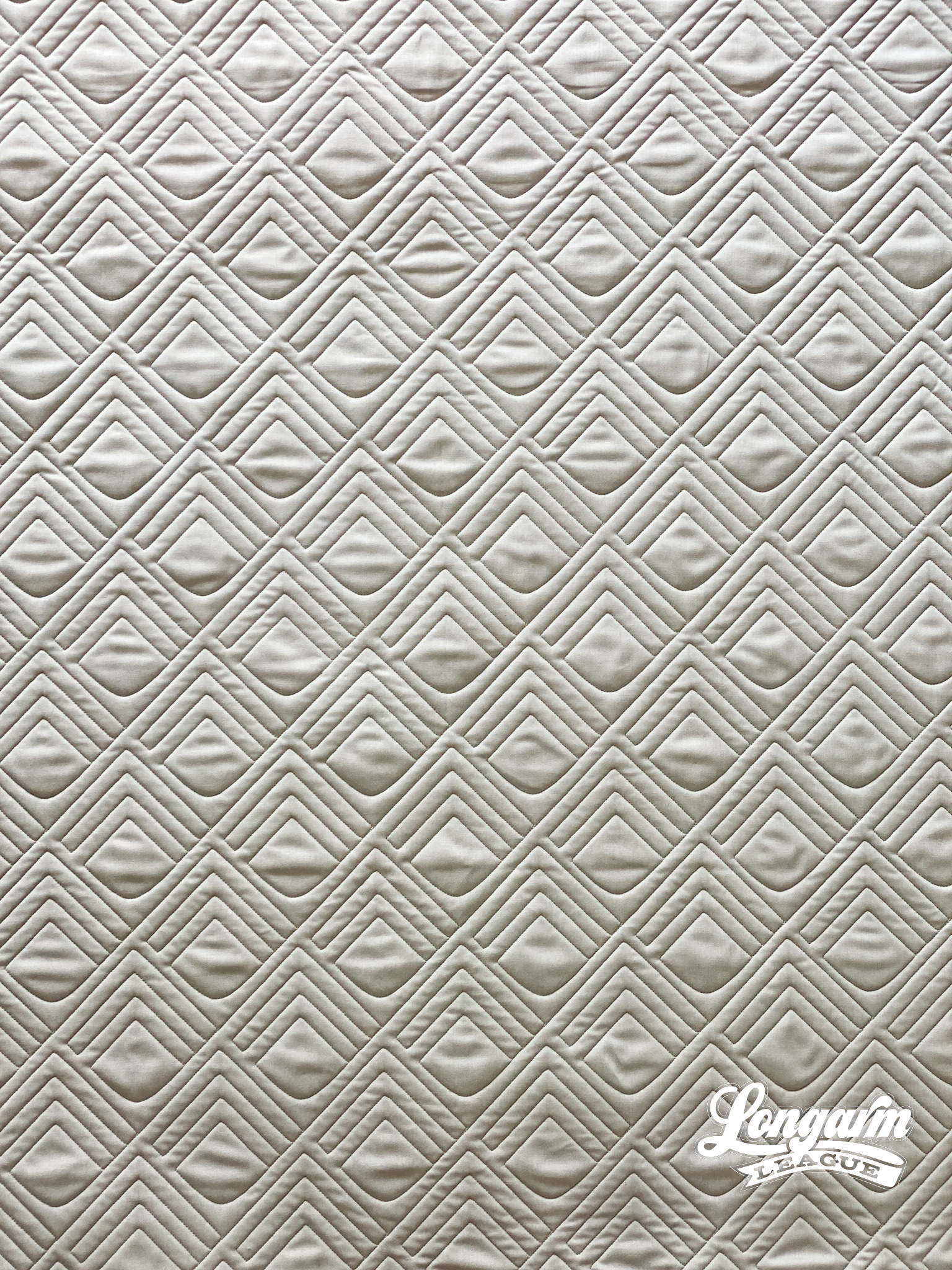
I love, love, love using echoed lines and shapes to make a textural impact. You can see that I used that technique with this design while also incorporating a small curve.

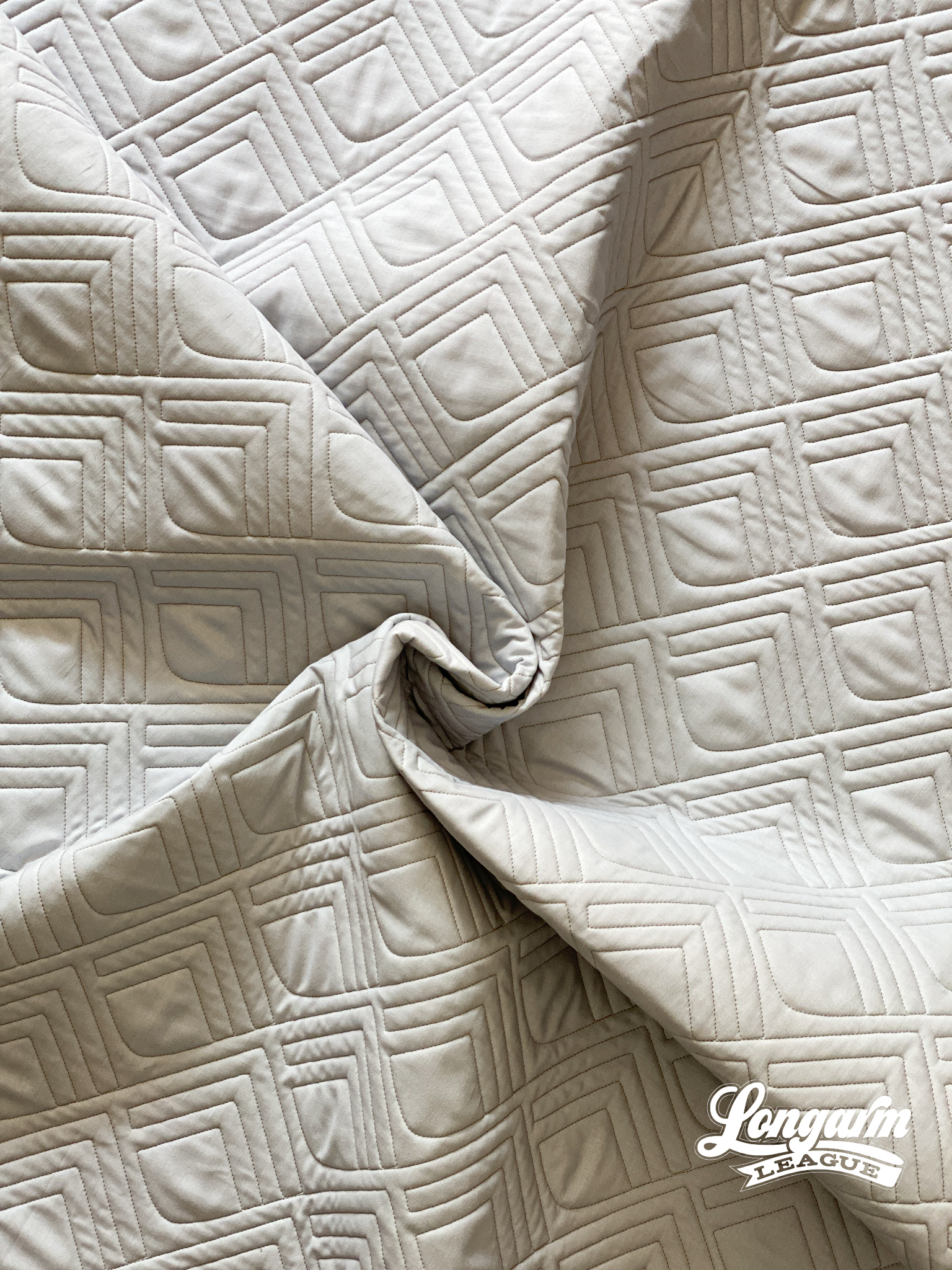
Here are my specifics using a baby-sized sample in the photos (45" x 50" quilt size):
Row height: 3"
Gap: -1.478"*
Pattern height: 4.478"
Offset: 50%
Backtracking: minimal
*Gap refers to the space I'm allowing between rows. I use an Intelliquilter for my computerized quilting, and because that measurement is quantifiable, I provide it here.
The row height PLUS the noted gap amount totals the "pattern height". If you don't use an Intelliquilter, you'll likely want to start sizing with the pattern height number and adjust the spacing between rows to your liking. You may not have a measurement available that tells you the measurement between rows, and that's okay.
We've begun adding a PDF to our zipped file so that you can print out design images and add your ...
Fleur Drive Digital Pantograph Quilting Design

Meet Fleur Drive. It's got a sweet sophistication that'll add a touch of class to your next quilt top.
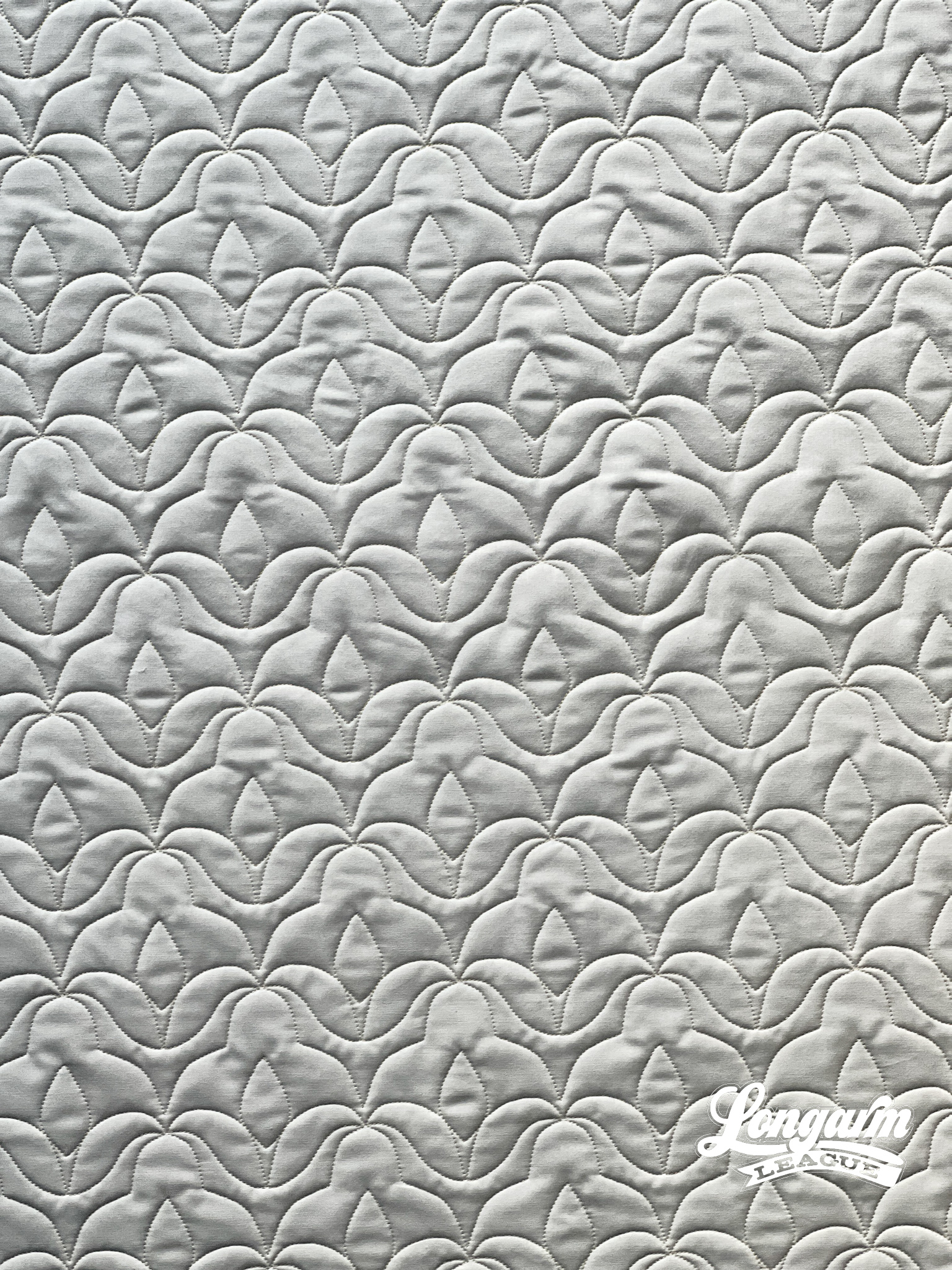
The scalloped bottom edge of the motif has a beautiful way of integrating into the row below. One man's ceiling is another man's floor, as Paul Simon would say.

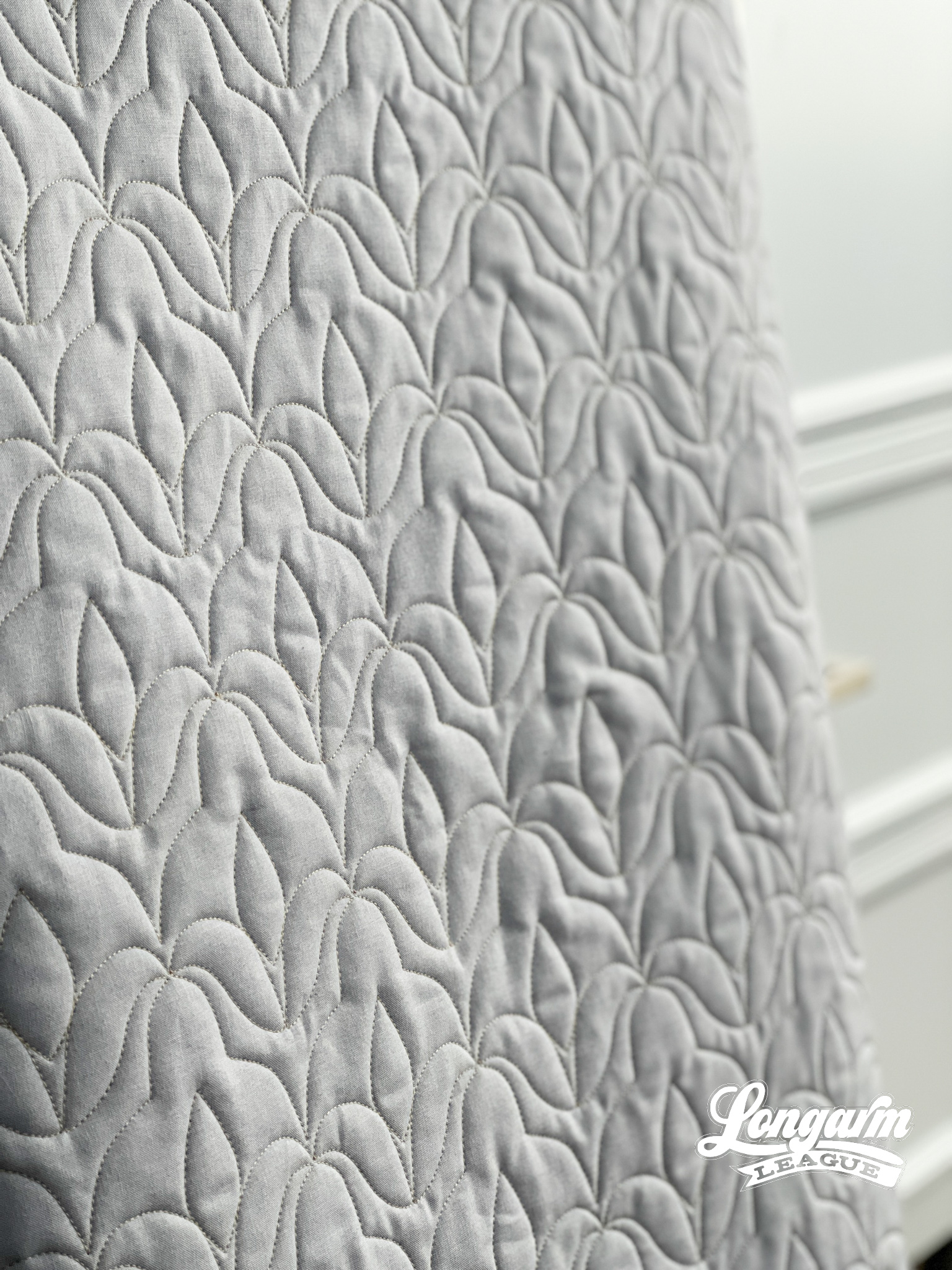
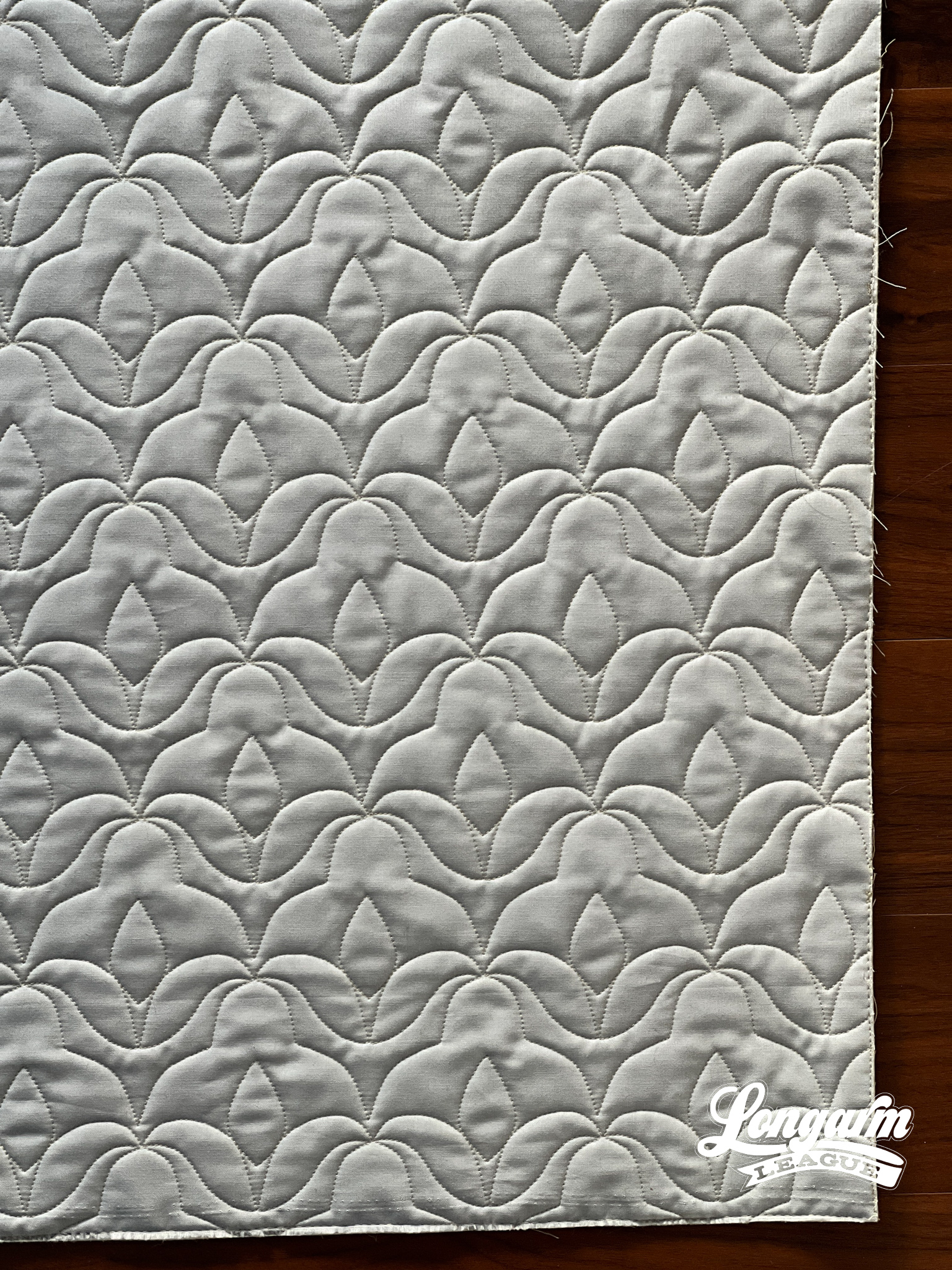
The stitching is simple and straight-forward. It does require every other row to be offset or staggered.

Here are my specifics using a baby-sized sample in the photos (45" x 50" quilt size):
Row height: 3"
Gap: -1.225"
Pattern height: 4.225" (distance from the top to bottom of the repeat)
Offset: 50%
I use an Intellquilter as my computer system, so your terms might differ. I can tell you I started with a pattern height at nearly 5" and it was too large of a scale for my taste... so I ripped out the first row and started again. Part of that might have been due to the scale in relation to this smallish quilt.

There's no backtracking with this design. It does require a 50% offset, or staggering every other row.








